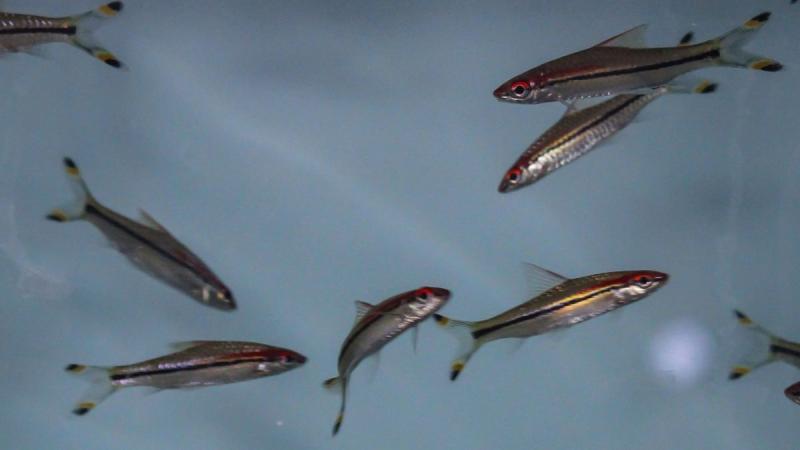
Understanding patterns in nature has been of interest to researchers. Some of the popular questions have been around why birds flock together, how groups of bees build their honeycombs out of perfect hexagons, how ants navigate finding the shortest path back to the nest, and the likes. Researchers across the world are trying to decipher and explain how and why such specific patterns emerge. In a similar sense, a posing question has been how fish school together.
A new study by researchers at the Indian Institute of Science (IISc) and their collaborators, reveals that fish school by copying each other and changing directions randomly, rather than calculating and adapting to an average direction of the group. The study, published in the journal Nature Physics, was partially funded by the Department of Science and Technology (DST), Science and Engineering Research Board (SERB), DBT-IISc Partnership Program and Council of Scientific and Engineering Research (CSIR).
Typically, researchers tend to discard ‘noise’—statistical deviations from expected patterns—while studying how animals behave in groups. It is often assumed to be a nuisance and is therefore filtered out. However, the current study disapproves this norm and finds that noise can actually help us understand how complex group-level behaviours emerge from simple individual behaviours.
“It is very counter-intuitive. We all usually think noise reduces order,” says Prof Vishwesha Guttal from the Centre for Ecological Sciences, IISc, who is an author of the study.
"In the fish that we have studied, schooling turns out to be noise-induced. It's not what anyone traditionally thought it was,” says Dr Richard Morris from the University of New South Wales, Australia, who is also an author of this study. “Noise, in this setting, is simply the randomness arising from interactions between individual fish,” he explains.
The researchers of the study closely tracked the cichlid fish Etroplus suratensis—a popular estuarine edible fish found in India and locally known as karimeen—swimming in large water tanks. They studied both the direction in which the fish moved and the degree to which they were aligned towards each other. Crucially, the researchers also tracked how these behaviours fluctuated over time.
“What we find is that when the fish are moving in a misaligned state, the fluctuations are actually high,” says Dr Danny Raj M, INSPIRE Faculty Fellow at the Department of Chemical Engineering, IISc, and a co-author on the paper.
When fluctuations were high, it had surprising effects on the behaviour of the group—they became more synchronized in their swimming.
The researchers attribute this behaviour to the fact that each member of the group was copying the direction of one of its neighbours, chosen randomly. This finding is in contrast to classical models, which have suggested that each fish copied what the overall group was doing on average.
“When they are ordered, copying the direction of a random individual from the group doesn't change the overall behaviour very much,” says Prof Guttal. “When they are highly disordered, this copying has a greater effect,” he adds.
When the fish are not well aligned with group members, the noise resulting from the fluctuation grows larger, eventually ‘kicking’ the group from one state (random swimming) to a different state (schooling).
Here is a short video with 30 fish in the tank. Our experiments also has 15 and 60 fish. pic.twitter.com/Miz0gb11va
— Vishu Guttal (@vishuguttal) March 2, 2020
The researchers also found that the fewer the fish in the group, the greater the noise, and therefore the more likely they were to swim together.
“We call this rule a ‘pairwise copying’ -- which is relatively simpler than models which assume that organisms average the direction of neighbours and turn towards them,” explains Prof Guttal.
Understanding how such emergent behaviour arises in nature can also be useful for studying other processes, such as robotic swarms or how information propagates in crowds.
“People are actually using these kinds of models to understand the dynamics there,” says Dr Jitesh Jhawar, a postdoctoral student at Prof Guttal’s lab.
Beyond fish behaviour, the discovery has the power to reshape the understanding of collective motion in animals and calls for a revision of how noise is treated in studies of behaviour dynamics.
This article was based on press releases from IISc and EurekAlert!






